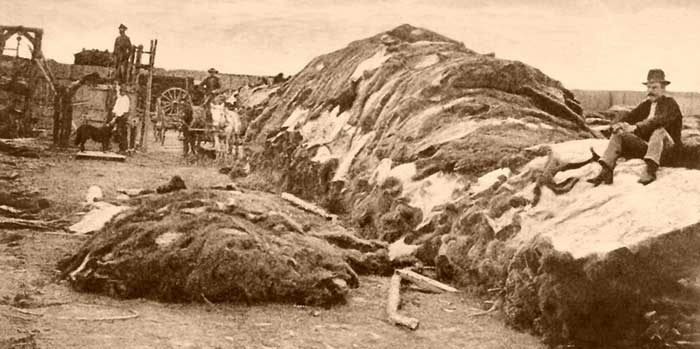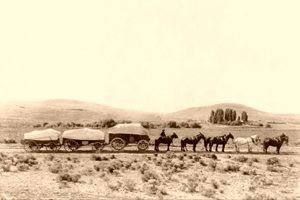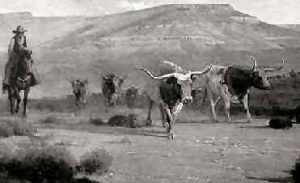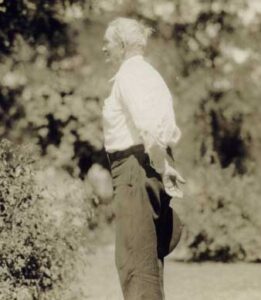
Charles E. Jones, courtesy Oklahoma Historical Society.
The Jones and Plummer Trail began in Dodge City, Kansas, and went southwest through the Oklahoma Panhandle into Texas.
In 1873, the government encouraged buffalo hunting south of the Arkansas River, totally disregarding the Medicine Lodge Treaty which had set aside a hunting round for the Indians “as long as water runs and grass grows.” The idea was to force the Indians off this land by destroying their food supply. In retaliation, a number of bloody raids were staged by Comanche Chief Quanah Parker and his followers. One of these was a raid of the trading post at Adobe Walls, Texas in June 1874. Afterward, the trading post was abandoned and another site was needed.
The Jones and Plummer Trail was established in the fall of 1874 when two former buffalo hunters turned merchants and freighters, Charles “Dirty Face” Edward Jones and Joseph H. Plummer, established a dugout store at the mouth of Wolf Creek in the Texas Panhandle. They sold guns, ammunition, supplies and kept a bar that sold whiskey. They bought dried buffalo meant, tongues, and hides. At that time, Dodge City was the end of the railroad line and the trail served as a route for transporting supplies from Dodge to their store and returning buffalo products to the railroad.
After Jones marked the trail, and the partners began to make trips to and from Dodge City to deliver hides and buffalo meat and to purchase goods, ruts were cut into the sod deep enough for others to follow. From Dodge City, the trail angled southwest, paralleling Crooked Creek, and crossed the Cimarron River at Miles Landing in Meade County, Kansas, before entering the Oklahoma Panhandle. The trail then ran south-southwest to the site of present-day Beaver and forded the North Canadian River. It then continued due south for 30 miles to present-day Booker, Oklahoma. Passing Brubaker Lake, it headed southwest toward Gillalow Lake and on to the Jones and Plummer store on Wolf Creek just east of what is now U.S. Highway 83. The trail was extended farther south to Mobeetie, Texas making the entire route about 168 miles. Mobeetie grew rapidly, making the trail attractive to additional freighters.
For freighters, the trail was popular because it was well-marked, the watering places were spaced closer than those on many of the other trails, and the terrain was flatter and smoother. Six flowing-stream crossings were the most dangerous part of the journey, but the trail’s shifting sand was the worst aspect of the trail especially after heavy rains when streams widened and filled with quicksand.
Freighters were not the only users of the trail. During the late 1870s, Jones and Plummer’s store gained a reputation as a safe place for outlaws to hide and replenish their supplies. In the winter of 1878 Bat Masterson and a posse from Dodge City pursued a gang of train robbers along the trail, only to lose them at the store.
The store operated until the end of 1877 when buffalo hunting was coming to an end. The partners then became cattle ranchers and their old store was converted into a ranch headquarters. The partnership dissolved in 1887, leaving only Jones to ranch for two more seasons before selling his holdings.
During the peak freight years of 1880 to 1886, the Jones and Plummer trail also provided the path for materials important projects as the building of Fort Elliott. Troops in the field, hunters, ranchers, homesteaders, and towns also depended on the goods that passed along the trail. At times, the sheer volume of freight was remarkable. At its highest point, 150,000 pounds of freight was shipped along the trail in a week. Eventually, five towns were established along the trail, which served as their primary artery for commerce and travel. After 1879 the trail was used by mail contractors, and in 1886 P. G. Reynolds made it a major stagecoach route from Dodge City to Mobeetie. Though primarily a freighting trail, the Jones and Plummer Trail was also used by cattlemen driving herds north to the Dodge City stockyards. Besides the merchants, the trail was used by the big ranchers, and traffic really picked up when homesteaders started to stream into the area.
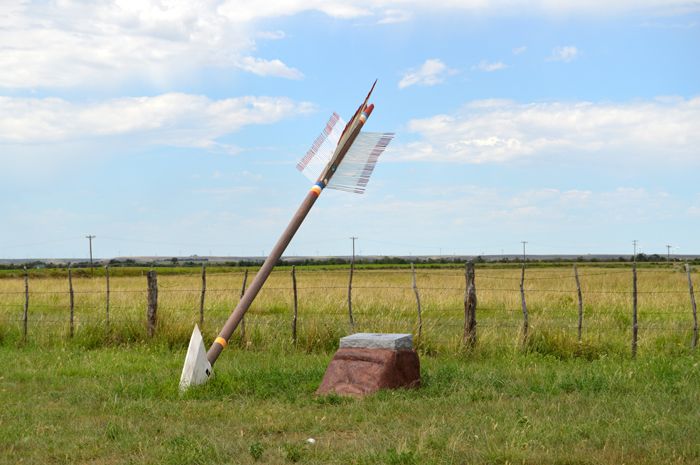
The site of Fort Elliiot, Texas today by Kathy Alexander.
The trail was used for about 20 years through the 1870s and 1880s but was abandoned with the arrival of the railroads. Although local traffic continued for some time, the days of the wagon-road economy as a major economic impact ceased to exist.
© Kathy Alexander/Legends of America, updated December 2021.
Also See:
The Cattle Trails by Emerson Hough
The Great Western Cattle Trail
Tales & Trails of the American Frontier
Sources:
Oklahoma History
Old Meade County
Texas Historical Association

